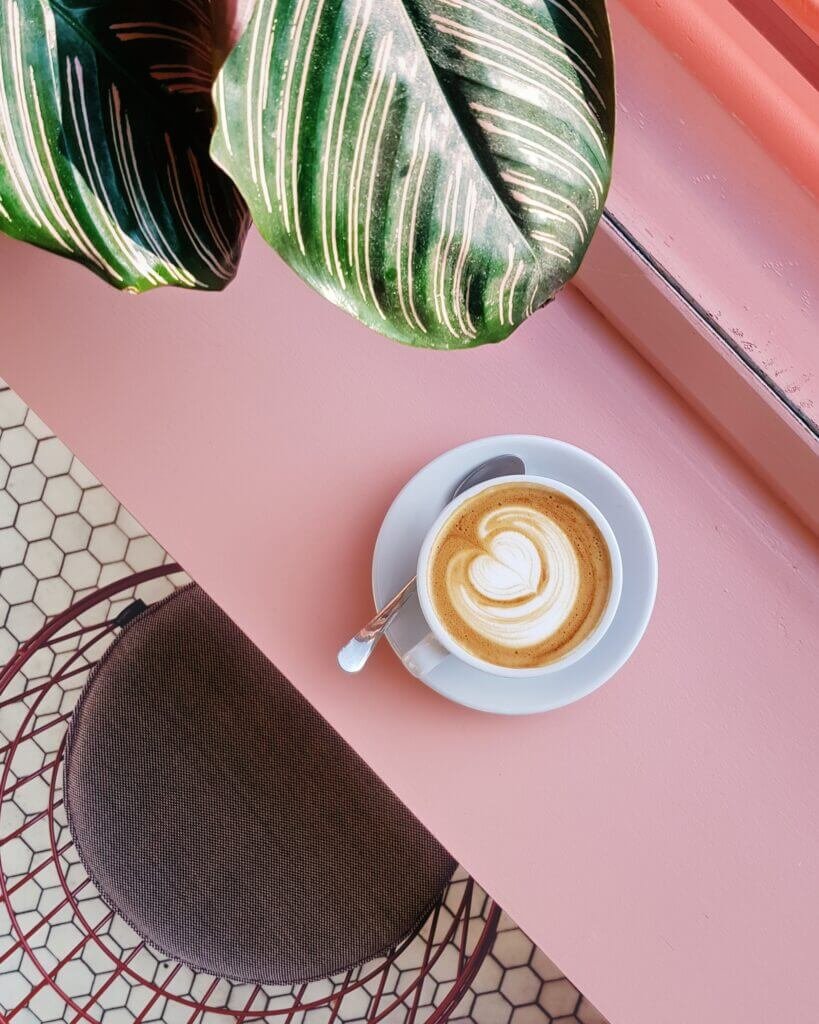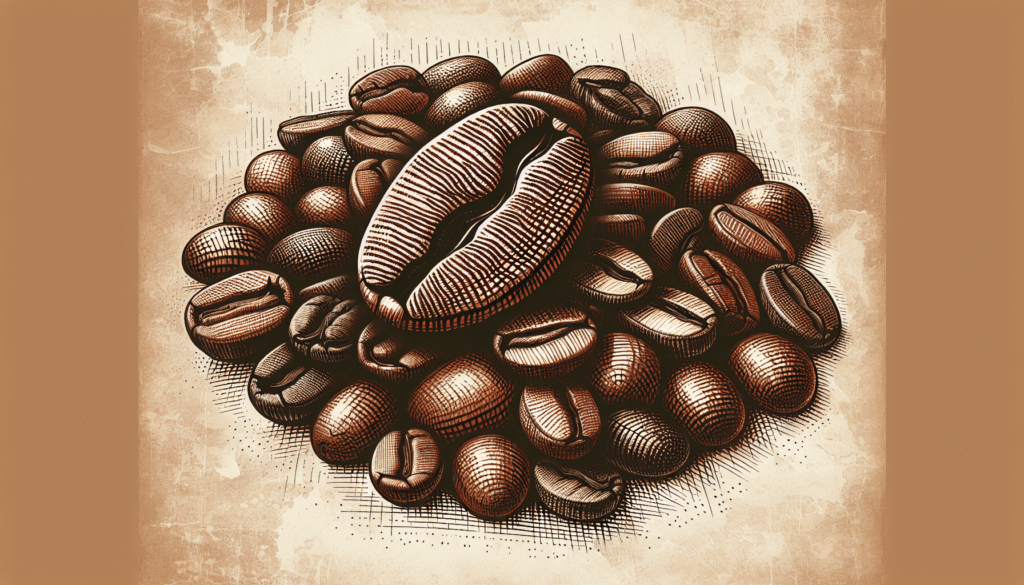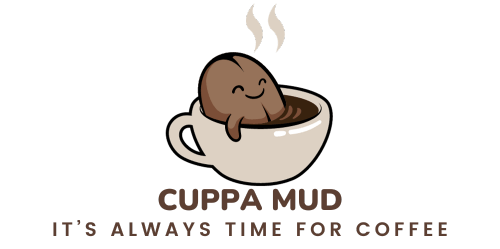Are you new to the world of coffee and eager to learn about the art of selecting and roasting beans? Look no further! In this beginner’s guide, we will take you on a journey through the fascinating world of coffee bean selection and roasting. From understanding the different types of beans to mastering the art of roasting, you’ll gain valuable insights and tips to elevate your coffee brewing game. So grab a cup of your favorite brew and get ready to embark on a flavorful adventure!

Coffee Bean Selection
Choosing the right coffee beans is essential for brewing a delicious cup of coffee. There are different varieties of coffee beans available, but the two most commonly known are Arabica and Robusta beans. Understanding the characteristics, flavor profiles, and considerations for roasting these beans will help you make an informed decision when selecting the perfect coffee beans for your taste buds.
Understanding Arabica and Robusta Beans
Arabica and Robusta beans are the two main species of coffee beans grown and consumed worldwide.
Characteristics of Arabica Beans
Arabica beans are known for their superior quality and taste. They are grown at higher altitudes, which results in slower maturation and a more complex flavor profile. Arabica beans have a sweeter and softer taste, often described as having a wide range of flavors including fruity, floral, and nutty notes. These beans have a higher acidity level and a lower caffeine content compared to Robusta beans.
Characteristics of Robusta Beans
Robusta beans are more robust and resilient than Arabica beans, as the name suggests. They are grown at lower altitudes, making them easier to cultivate in different climates. Robusta beans have a stronger and harsher taste, often described as having a more bitter and earthy flavor profile. These beans contain more caffeine and have a higher acidity level, providing a powerful and bold punch in your cup of coffee.
Flavor Profile Differences
The choice between Arabica and Robusta beans ultimately depends on your preference for flavor. If you enjoy a smoother and more nuanced taste with a variety of flavors, Arabica beans are the way to go. On the other hand, if you prefer a stronger and more bitter taste with a higher caffeine content, Robusta beans will satisfy your cravings.
Deciding on a Bean Type
Once you understand the differences between Arabica and Robusta beans, you can delve deeper into choosing a specific bean type based on your preferences and values.
Single Origin vs. Blended Beans
Single origin beans come from a specific geographic region and are often associated with unique characteristics and flavor profiles. They offer a taste of the terroir and culture of a particular coffee-growing region. Blended beans, on the other hand, are a combination of different beans from multiple regions. They are blended to create a harmonious flavor profile and consistency. Choosing between single origin and blended beans depends on whether you prefer exploring the diversity of flavors or seeking a consistent taste experience.
Regional Varieties and Flavor Profiles
Different coffee-growing regions around the world produce beans with distinct flavor profiles. For example, beans from Central and South America often have a medium-body and fruity acidity, while beans from African regions exhibit floral and citrusy notes. Asian coffee beans are known for their earthy and chocolatey flavors. Exploring regional varieties allows you to discover the unique characteristics that each origin has to offer.
Fair Trade and Organic Options
For those who value ethical and sustainable practices, considering fair trade and organic options is crucial. Fair trade coffee ensures that farmers are paid fairly for their work and have access to better living conditions. Organic coffee is grown without the use of synthetic pesticides and fertilizers, minimizing the impact on the environment and promoting healthier farming practices. Choosing fair trade and organic beans supports farmers and contributes to a more sustainable coffee industry.
Considerations for Roasting
Roasting is the process of transforming green coffee beans into the aromatic and flavorful beans we use for brewing coffee. Understanding the different roast levels, profiles, and the impact of roasting on flavor will help you achieve the perfect roast for your taste.
Different Roast Levels
Coffee beans can be roasted to different levels, ranging from light to dark. Light roasts preserve the original flavors of the beans, resulting in a brighter acidity and a more pronounced flavor profile. Medium roasts strike a balance between acidity and roasting flavors, offering a slightly sweeter taste. Dark roasts have a more intense flavor, with the original characteristics of the beans overpowered by the roasting process. The choice of roast level depends on your preference for flavor intensity.
Roast Profiles and Development Times
Roasting profiles refer to the specific temperature and time combinations used during roasting. These profiles greatly influence the flavor and aroma of the coffee. Longer development times at lower temperatures result in a smoother and sweeter taste, while shorter development times at higher temperatures produce a brighter and more acidic flavor. Experimenting with different profiles allows you to fine-tune the roast to achieve the desired taste.
Impact of Roasting on Flavor
The roasting process has a significant impact on the flavor of the coffee. As the beans roast, the sugars and proteins inside them undergo chemical reactions, resulting in the formation of flavor compounds. The Maillard reaction, responsible for the browning of the beans, creates flavors similar to caramel and chocolate. Caramelization adds sweetness and depth to the coffee. Balancing these reactions is key to achieving the desired flavor profile.

Coffee Bean Roasting
Roasting coffee beans is a fascinating and intricate process that requires careful attention to detail. Understanding different roasting methods, the roasting process itself, and the advantages and challenges of controlled and uncontrolled roasting will help you become a skilled home roaster.
Roasting Methods and Equipment
There are various methods and equipment options for roasting coffee beans. Traditional drum roasters are widely used and provide consistent results. Fluid bed roasters, also known as air roasters, use hot air to circulate and roast the beans more rapidly. Home roasting options include using popcorn poppers or dedicated home roasters. Each method and equipment choice offers its own unique advantages and requires different levels of expertise.
Understanding the Roasting Process
The roasting process can be divided into different stages: drying, browning, first crack, and second crack. During the drying stage, moisture is removed from the beans. The browning stage involves the Maillard reaction and caramelization, which contribute to the flavor development. The first crack is an audible sound produced when the beans expand due to the release of steam. The second crack occurs at a higher temperature and results in a darker roast. Understanding these stages and their impact on the beans’ characteristics helps guide the roasting process.
Controlled vs. Uncontrolled Roasting
Controlled roasting refers to using precise temperature and time settings to achieve consistency and desired flavor outcomes. It allows for more control over the roast profiles and is often used by commercial roasters. Uncontrolled roasting involves adjusting the roast based on sensory cues, such as color and aroma. This method requires a skilled roaster who can make real-time decisions during the process. Both approaches have their benefits and challenges, and finding the right balance depends on your roasting goals and expertise.
Roasting Methods and Equipment
When it comes to choosing the right equipment for roasting coffee beans, several options are available, each with its own advantages and considerations.
Traditional Drum Roasters
Traditional drum roasters are widely used in commercial settings and provide the ability to roast larger quantities of coffee beans. These roasters have a rotating drum that evenly heats the beans, resulting in consistent roasts. They offer control over temperature and time settings, allowing for precise profiles. However, they can be more expensive and require more space.
Fluid Bed Roasters
Fluid bed roasters, also known as air roasters, use hot air to circulate and roast the coffee beans. These roasters offer a faster and more efficient roasting process, as the hot air evenly heats the beans. They are often more affordable and compact, making them suitable for home roasters. However, they require careful monitoring, as beans can easily over-roast due to the rapid heat transfer.
Home Roasting Options
For coffee enthusiasts who want to roast their own beans at home, several options are available. Using a popcorn popper can be a cost-effective method to get started in home roasting. However, it requires modifications to control temperature and agitation. Dedicated home roasters offer more control and consistency, with features specifically designed for home use. Choosing the right home roasting option depends on your budget, space, and desired level of control.

Understanding the Roasting Process
The roasting process is a delicate dance between time, temperature, and the beans’ characteristics. Understanding the different stages of roasting, temperature and time considerations, and the chemical reactions that occur during roasting will help you roast your beans to perfection.
Stages of Roasting
The roasting process can be divided into distinct stages, each with its own characteristics. The drying stage occurs at the beginning of the roast, where moisture is gradually removed from the beans. The beans then enter the browning stage, where the Maillard reaction and caramelization take place, leading to the development of flavor compounds. The first crack is an audible sound when the beans expand and release steam, marking the beginning of the development stage. Finally, the second crack occurs at a higher temperature and results in a darker roast with a more pronounced flavor.
Temperature and Time Considerations
Achieving the perfect roast requires careful monitoring and adjustment of temperature and time. Different beans and desired flavor profiles require specific temperature settings. The rate at which the beans heat, as well as the duration of each stage, affects the final flavor. Monitoring the temperature and time throughout the roast allows for control and consistency.
Maillard Reaction and Caramelization
The Maillard reaction and caramelization are chemical reactions that occur during the roasting process and greatly impact the flavor of the coffee. The Maillard reaction is responsible for the browning of the beans and the creation of flavors similar to caramel and chocolate. Caramelization further adds sweetness and depth to the coffee, enhancing the overall taste experience. Understanding these reactions and their role in flavor development allows you to fine-tune your roast to achieve the desired flavor profile.
Controlled vs. Uncontrolled Roasting
When it comes to roasting coffee beans, there are two main approaches: controlled roasting and uncontrolled roasting. Each method has its pros and cons, and finding the right balance depends on your preferences and expertise.
Pros and Cons of Controlled Roasting
Controlled roasting allows for precise temperature and time settings, resulting in consistent and reproducible roasts. It provides more control over the flavor development and allows roasters to create specific profiles. Controlled roasting is often used in commercial settings and requires specialized equipment. However, it can be less intuitive and may limit the roaster’s ability to make real-time adjustments.
Benefits and Challenges of Uncontrolled Roasting
Uncontrolled roasting, also known as artisanal or craft roasting, relies on the roaster’s sensory skills and ability to adjust the roast based on color, aroma, and other cues. It offers flexibility and allows for real-time decisions during the roasting process. It is often used by small-scale roasters and coffee enthusiasts who enjoy the hands-on approach. However, uncontrolled roasting requires experience and expertise to achieve consistent results. It also requires careful monitoring, as beans can easily over or under roast.
Finding the Right Balance
Choosing between controlled and uncontrolled roasting depends on your roasting goals and preferences. If you value consistency and precise flavor profiles, controlled roasting may be the best approach. However, if you enjoy the creativity and flexibility of adjusting the roast based on sensory cues, uncontrolled roasting may be more suitable. Ultimately, finding the right balance between control and intuition is key to achieving your desired roast.

Tips for Successful Roasting
Roasting coffee beans can be a rewarding and enjoyable process. Here are some tips to help you achieve successful and delicious roasts.
Choosing Green Beans
Start with high-quality green beans. Look for beans that are fresh, well-sourced, and free from defects. Green beans with a uniform size and color tend to roast more evenly. Experiment with different origins and varieties to discover the flavors you enjoy the most.
Roasting in Small Batches
Roasting in small batches allows for better control and consistency. It also allows you to experiment with different roast profiles without wasting a large quantity of beans. Smaller batches are easier to handle and provide an opportunity to fine-tune the roast to your taste.
Monitoring Bean Development
Pay close attention to the appearance, aroma, and sound of the beans during the roasting process. The color of the beans should gradually darken, reaching the desired roast level. The aroma should be pleasant and indicative of the desired flavor profile. Listening for the first and second crack helps determine the progress of the roast. Regular monitoring ensures that the beans are roasted to perfection.
Maintaining Consistency
Consistency is key to achieving great roasts. Keep detailed records of your roasting process, including temperature, time, and any adjustments made. This allows you to replicate successful roasts and make improvements over time. Consistency also ensures that you can accurately evaluate the impact of different variables on the final flavor.
Experimenting with Different Profiles
Don’t be afraid to experiment with different roast profiles. Adjusting temperature, time, and other variables can result in unique and exciting flavors. Keep detailed records, take notes, and taste the coffee at different stages of the roast to understand the impact of each variable on the final product. Embrace the creativity of home roasting and have fun exploring the endless possibilities.
Avoiding Under or Over Roasting
Finding the perfect roast can be a delicate balance. Under roasting can result in coffee that tastes sour and grassy, while over roasting can lead to burnt and bitter flavors. Regularly monitor the roast, take detailed notes, and rely on sensory cues to avoid under or over roasting. Adjusting temperature and time based on the desired roast level allows you to achieve the perfect balance of flavors.
In conclusion, understanding the characteristics of Arabica and Robusta beans, deciding on the right bean type, considering roast profiles, and mastering the roasting process are all essential elements in the journey to a great cup of coffee. Whether you prefer a smoother and nuanced flavor or a stronger and more robust taste, exploring different beans and experimenting with roasting techniques will allow you to discover the perfect cup tailored to your preferences. So grab some beans, fire up your roaster, and enjoy the wonderfully aromatic and flavorful world of coffee. Cheers!


